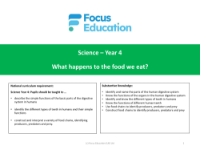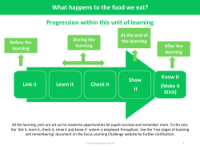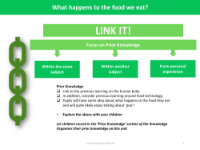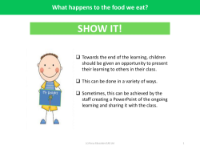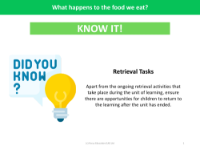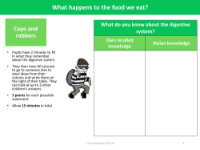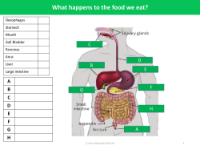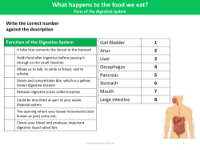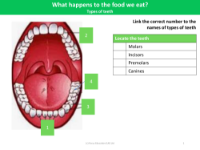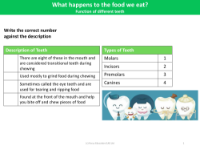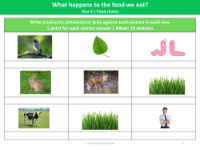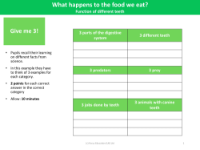Knowledge organiser - Digestive system - Year 4

Science Resource Description
The Year 4 knowledge organiser for the digestive system provides a comprehensive overview of the vocabulary and key knowledge required to understand how the human body processes food. It introduces the oesophagus as a stretchy tube that transports food from the throat to the stomach, and the pancreas, an organ that secretes digestive enzymes. The term 'organ' is defined and exemplified with the skin, which is noted as the largest organ, along with other vital internal organs such as the brain, lungs, heart, liver, stomach, intestines, pancreas, and kidneys.
The organiser goes on to describe the intestines, with the small intestine being responsible for absorbing nutrients and minerals from food, while the large intestine absorbs water from indigestible food matter. Teeth are also covered, with molars identified as the teeth used for chewing and grinding, and canines recognised for their role in ripping and tearing food. The key knowledge section emphasises the importance of understanding the journey of food through the digestive system, naming and recognising the functions of its different parts, identifying various types of human teeth and their specific functions, and constructing food chains to illustrate the relationships between producers, predators, and prey. This foundational knowledge sets the stage for a deeper exploration of the digestive system in Year 4 science.
